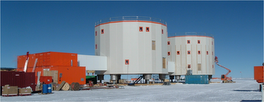Oh dear, I just got tagged! There is a meme going round the Geo-Blogosphere, and I just got hit with it. What is a meme, you ask?
In the context of web logs / 'blogs / blogging and other kinds of personal web sites it's some kind of list of questions that you saw somewhere else and you decided to answer the questions. [The Daily Meme]
Chris over at Highly Allochthonous answered the current meme (which is to list seven things about one's self), and then tagged me to do the same. I've never played these kinds of games before, and I will probably not be able to play while I'm away, so here goes:
(1) Despite loving sailboats and sailing, I get quite seasick, especially when I'm stuck below deck. This does not bode well for the sea crossing to Antarctica.
(2) I decided to do a PhD in Earth Sciences after tagging onto a field trip to Greece. Before then, I was set on a career in Radio Astronomy. From the Heavens to the solid Earth in some sense.
(3) I hate the cold!
(4) As an undergraduate, I learned to fly gliders, though I would probably be incapable of doing so now.
(5) On my reading list for Antarctica: Simon Winchester (in Italian), Garcia Marquez (in French) and Jared Diamond (in English). I'm not doing too well on the reading in original language score (one out of three).
(6) One winter, instead of building a snowman, some friends and I built a snow Loch Ness monster. After that, I could never go back to snowmen, too boring!
(7) Sismordia isn't my first attempt at blogging, but it's the best yet.
OK, I'm done! (I won't be tagging anyone else with this meme - viral blogging can only go so far before it runs out of steam).
-----
Keep up to date with the latest developments at
http://sismordia.blogspot.com























